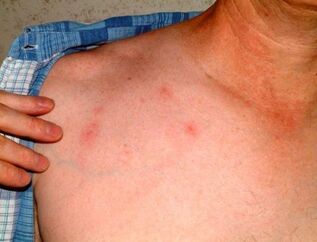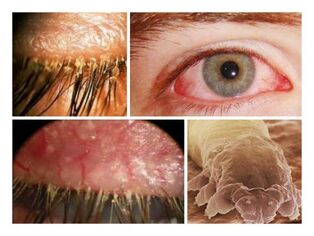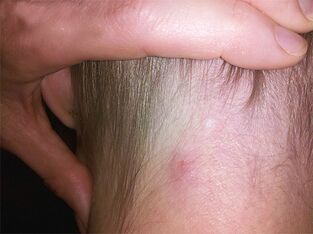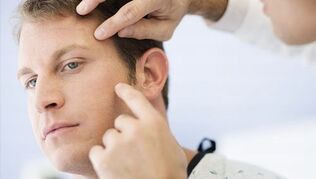
Photos and videos of symptoms of parasites under the skin of humans are not pleasant. Unlike intestinal worms, which are not even known to exist, epithelial infections are easy to see. In this case, people will feel constant discomfort due to the symptoms accompanying the lesion. This helps to start diagnosing the disease and start treatment early. A photo of a human subcutaneous parasite makes people feel very sick, but the symptoms of infection are unpleasant. The picture does not convey the feeling that a person is crawling along his body. But epithelial infection is not only discomfort, but also a major threat to the health of the entire organism. Toxins secreted by parasites affect all organ systems, and worms themselves like to spread throughout the human body. Therefore, due to the presence of worms in the brain, visual organs, or heart, the manifestations of skin disease problems may be signs of life threatening patients.
What parasites live in the skin?
Skin diseases can cause many infections. If the presence of worms is most commonly diagnosed during an intestinal infection, insects and protozoa can also be found under the skin. Mosquitoes, ticks and other blood-sucking parasites usually do not attract people's attention and separate from humans, but some continue to survive and reproduce in the body.
Each type of infection has its own way of entering the body. The symptoms and effects of infection also vary greatly. Therefore, the treatment of the disease will be carried out in different ways. However, in order to distinguish one type of parasitic infection from another and to determine who lives in the body, it is necessary to make a long diagnosis. The doctor understands the characteristics and habitats of different parasites and will tell you the most likely option even before starting the test, focusing only on the symptoms and the patient's travel map around the world.
Parasitic microorganisms
The most common disease is leishmaniasis. It is caused by the simplest parasite, which is named pathology. Nine out of ten infections occur in only a few countries/regions:

- Syria;
- Iran;
- Saudi Arabia;
- Afghanistan;
- Peru;
- Brazil.
This disease is spread by mosquitoes and certain flies. Pathogenic microorganisms cannot survive in temperate climates, so you can only contract leishmaniasis after resting in countries with hot tropical climates.
After infection, the infection forms an ulcer at the insect bite site. Over time, it will heal and leave untidy scars. With multiple lesions, leishmaniasis may look like leprosy. The danger of this disease is that it spreads from the skin to the lymphatic system and affects the internal organs, gradually destroying them. At the same time, parasites live in cells, so the immune body is almost useless against protozoa. However, after a single experience against leishmaniasis, immunity was formed.
Insects in subcutaneous parasites
Diseases caused by this invasion are called insects. In humans, these subcutaneous parasites have several variants:
- cop meat disease (fungal disease).are called tropical sand fleas. Walking barefoot on the beach or lying in the sun is enough to make insects crawl on the body. It hides under the outer layer of the epithelium until the blood is drunk. Then, the fleas "get fat" and begin to press on the surrounding tissues, causing discomfort. When it dies, it will be excreted from the dead skin. If this does not happen, the tissue may be infected and abscessed.
- Skin peeling disease.South American human cattle ad injected larvae under the skin of humans. When fully developed, they tear the tissues and leave the body, leaving open wounds. If the skin on the eyelids and cartilage is damaged, it may be hazardous to health.
- Ac disease.These diseases are caused by s. The most famous is sc sores, which live and multiply under the skin and feed on its cells. The symptoms of filament sores can be easily distinguished from pruritic urticaria by filamentous streaks, which are the epithelial pathways for female parasite bites. Demodex, another mite, can cause dermatitis and hair loss.

In most cases, insects that settle in the human body live in southern countries because they need a stable hot climate for their growth. But in some cases, going to the sea in summer is enough to fight against subcutaneous parasites for several months.
Parasitic roundworm
Human subcutaneous worms are not difficult to find. They usually release their place through redness, itching and burns like other infections. But in some cases, the epithelium is only the middle stop, and the main development of pathology is still in the internal organs:
- Filariasis.There are several types of these worms. Some people like to settle in the internal organs, but some people affect the skin and eyes. The larvae of parasites are carried by mosquitoes and are found in warm areas. A painful, soft, active mass swells in the lesion. If the infection does not affect the organs of vision, there is no danger. But this requires surgical treatment.
- Guinea worm disease.Rishta worms enter the body with water containing a small amount of crustaceans, which store their larvae in their stomachs. Worms enter the abdominal cavity through their intestines, where they mate and lay eggs in the muscle tissue of the joint and leg bone area. When the new worm matures, the larva will penetrate the skin and appear. The only way to relieve the burning sensation and pain is to put the limbs in water. No other method has been invented to eliminate the settled parasites.
- Schistosomiasis.Not all worms under human skin will arrive there with food. To be infected with schistosomiasis, it is enough to swim in the freshwater of tropical countries in South America, the Caribbean, Africa or Southeast Asia. The skin lesions resemble sc sores and are accompanied by tingling sensations. However, after a period of time, the larvae enter the depths of the human body, after which the epithelial symptoms disappear, and the disease progresses to the next stage.
- Nasal deformity.Humans are not the natural host of this parasite. Therefore, worms cannot reproduce in the body. Therefore, Asian parasites can enter the body with fish, frogs or birds that are not heat-treated enough. After a month, the larvae began to migrate. They move under the skin and cause itching, redness and pain. Edema appeared in the abdomen.

After the first signs of life of the worm appear under the skin, the patient needs to be checked and treatment begins. If not removed in time, many parasites can seriously deteriorate health, including disability.
Diagnostic procedures
Considering that there are various parasites living under human skin, there is no universal method that can help pinpoint the cause of the disease. Similarly, we must not forget that insects and worms are not the only possible sources of skin diseases. Allergic reactions, fungal growth and bacterial infections are more likely to cause hives and dermatitis.
The first stage of finding parasites on human skin starts with inspection. The doctor investigates, examines the affected area, and asks about other symptoms. As a result, he will be able to narrow the search, and in some cases, such as dracunculiasis and filariasis, a prescription should be issued immediately.
If the physical examination does not help you fully understand the picture, please assign laboratory and hardware diagnostic methods:
- Blood test.Routine analysis reveals how the human body responds to infection. Therefore, experts can determine the nature of the disease. When performing biochemistry, attention should be paid to the indicators of red blood cell sedimentation rate and eosinophil content. If they are elevated, it may indicate helminthiasis. ELISA analysis is the most accurate. If such a parasite is present in the body, the presence of antibodies can even help determine its exact type.
- Stool analysis.Many subcutaneous worms are initially located in the intestine. By examining the stool, you can find the worm eggs and start treatment.
- Biopsy.Analyze the contents of affected tissues, purulent abscesses and blisters, and enlarged lymph nodes can also show images of this disease.
- Ultrasound, X-ray, CT and MRI.Various hardware methods of "scanning" the body will help determine the source of infection under the skin and internal organs. In some cases, this is the only effective diagnostic method.

Some infections can only be diagnosed by removing parasites from under the skin after treatment.
Treatment of parasitic diseases
Depending on the type of parasite, doctors must use different methods to eliminate the infection:
- The simplest microorganisms are destroyed by a series of antibiotics. It must be accompanied by symptomatic treatment.
- You can use special ointments and tablets to eliminate lice. At the same time, skin diseases can only be cured by surgery to remove the larvae from under the skin.
- The treatment of helminthiasis directly depends on the type of parasite. Therefore, filariasis can only be treated with surgery. Antistatic drugs will help get rid of schistosomes and intestinal parasites. And it does not provide treatment for dracunculiasis at all. One must wait for the worm to leave the body on its own and resist the symptoms: pain and inflammation.
In any case, you must undergo a thorough examination by a doctor and start treatment under the guidance of a doctor to ensure that the parasites are completely eliminated.






































